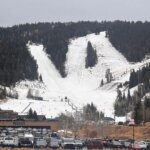News
Wild Wasatch: October brings night movement and migration for deer and elk

Photo: Utah Division of Wildlife Resources
PARK CITY, Utah — As autumn deepens across Summit County, local herds of mule deer and elk are becoming more active. October marks the end of the elk rut and the start of the mule deer breeding season, leading to increased activity in the Wasatch backcountry.
According to David Smedley, a wildlife biologist with the Utah Division of Wildlife Resources, the change in season triggers distinct patterns of movement, feeding, and migration. “In October, elk are finishing their rut, while mule deer begin to show signs of rutting behavior toward the end of the month,” Smedley explained. “The breeding season increases activity both day and night, but elk and deer are most active during the twilight hours of dawn and dusk.”

During these crepuscular hours—when the soft light of morning and evening prevails—these animals spend the most time foraging and moving. In the midday, they usually bed down in cover to conserve energy and avoid exposure, although they might rise occasionally to browse.
October is also a time for migration as herds move from their summer range in higher elevations to their winter range at lower altitudes. “This movement often occurs in the evening when the animals make their way to lower elevations,” Smedley said.
While deer and elk are primarily crepuscular, the onset of colder temperatures in late fall can change their behavior. “To cope with the cold, they may spend more time foraging during daylight hours than they would in warmer months,” Smedley noted. “They are seeking the energy needed to maintain their body temperature.”

As snow and cold weather push herds downslope, encounters between wildlife and residents become more frequent. “Deer and elk move into lower elevation areas in the fall and winter, which often leads to a higher concentration of animals near urban areas,” Smedley explained.
Habitat loss complicates this issue. “As more houses are built and the amount of usable winter range decreases, the likelihood of conflicts with humans increases,” he said.

Smedley urges drivers to slow down during evening hours when wildlife movement peaks and to resist the urge to feed the animals. “Give deer and elk their space and don’t feed them,” he advised. “Providing food can lead to animals becoming habituated to people or areas where conflicts are more likely.”
For residents and visitors alike, the sight of deer and elk moving through aspen groves and foothills is a defining rhythm of fall—a reminder that migration, even near town, is an ancient pattern still unfolding across the Wasatch.



















